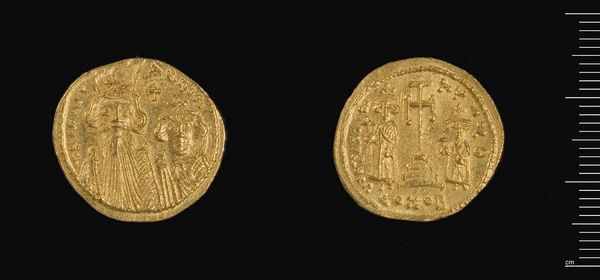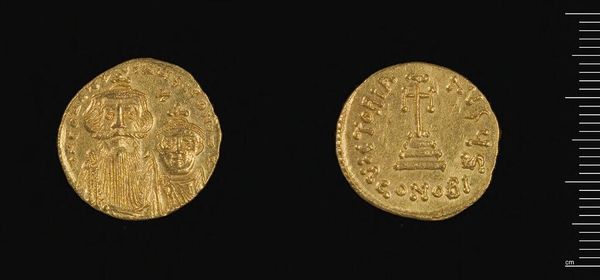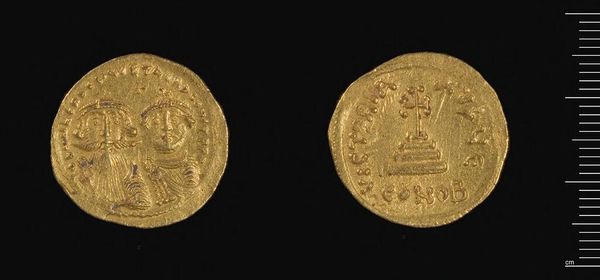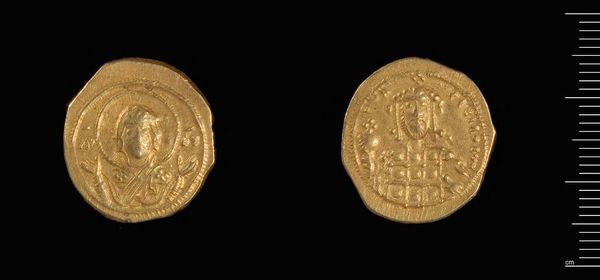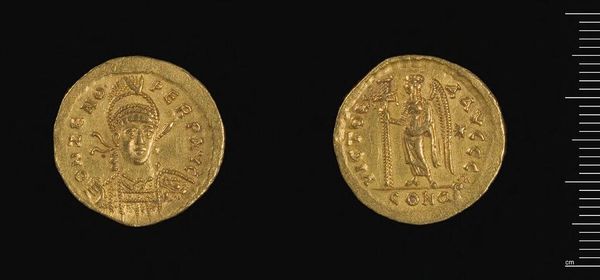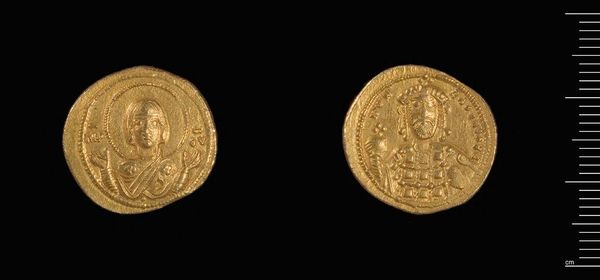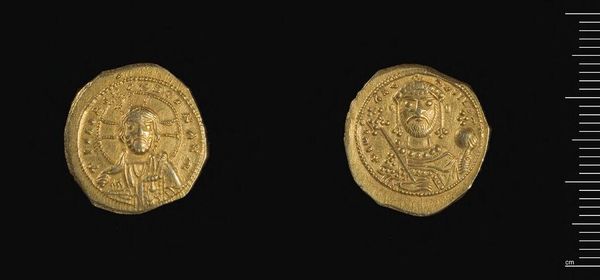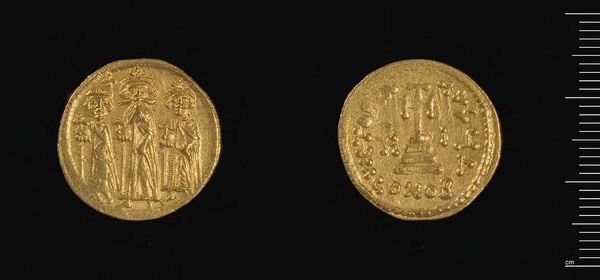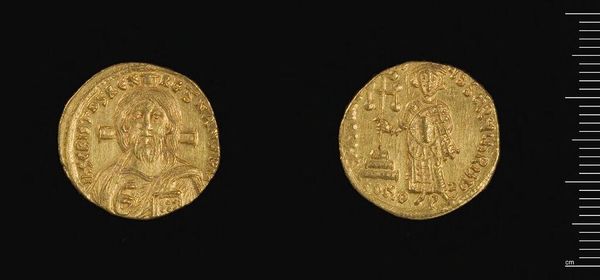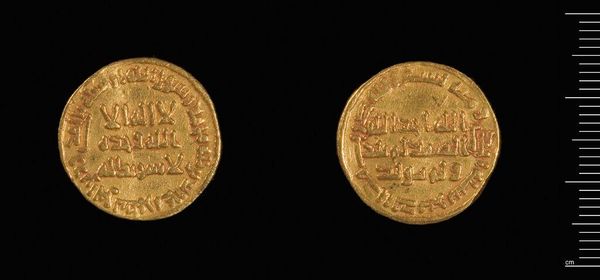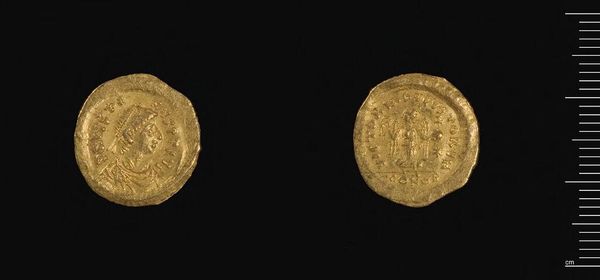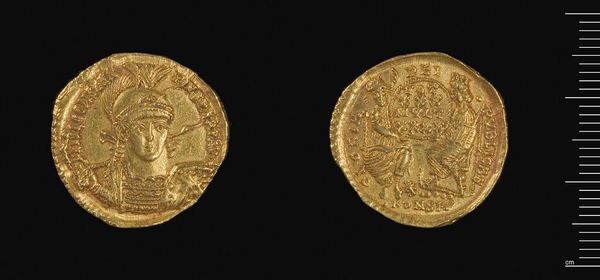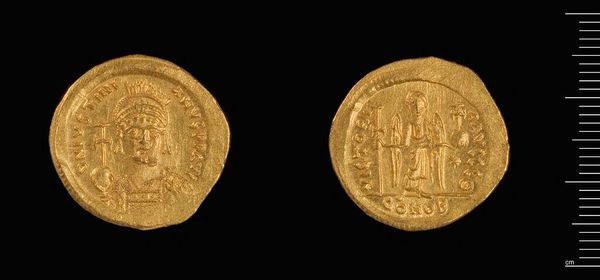
Solidus of Gisulph II, Imitation of Solidus of Justinian c. 741 - 742
0:00
0:00
Dimensions: 4.02 g
Copyright: CC0 1.0
Editor: Here we have a gold coin: the "Solidus of Gisulph II, Imitation of Solidus of Justinian." It's quite small, and seeing it makes me wonder about the power and influence it represented. What can you tell me about the context of this piece? Curator: This imitation solidus speaks volumes about power dynamics. It reflects how Gisulph II, despite not being part of the Byzantine Empire, chose to emulate its imagery, appropriating symbols of authority to legitimize his own rule. Notice how the act of imitation itself becomes a political statement. Editor: So, it’s less about accurate representation and more about making a statement? Curator: Precisely. Think of it as strategic visual propaganda. By adopting and adapting the visual language of a dominant power, Gisulph II was negotiating his place in the world, shaping his image for his people and neighboring rulers. Editor: That gives me a new perspective on coinage – it's not just money, it's a form of public art. Curator: Exactly. It highlights how artistic production is deeply intertwined with political and social aspirations, even in seemingly mundane objects like coins.
Comments
No comments
Be the first to comment and join the conversation on the ultimate creative platform.
